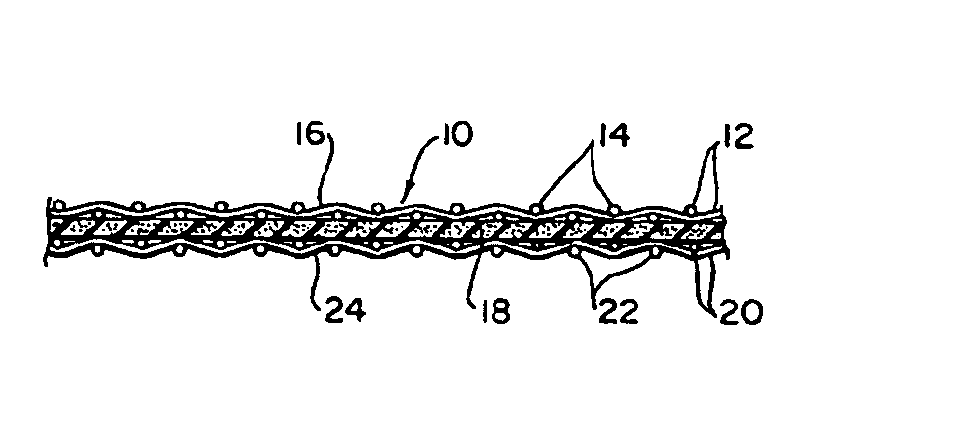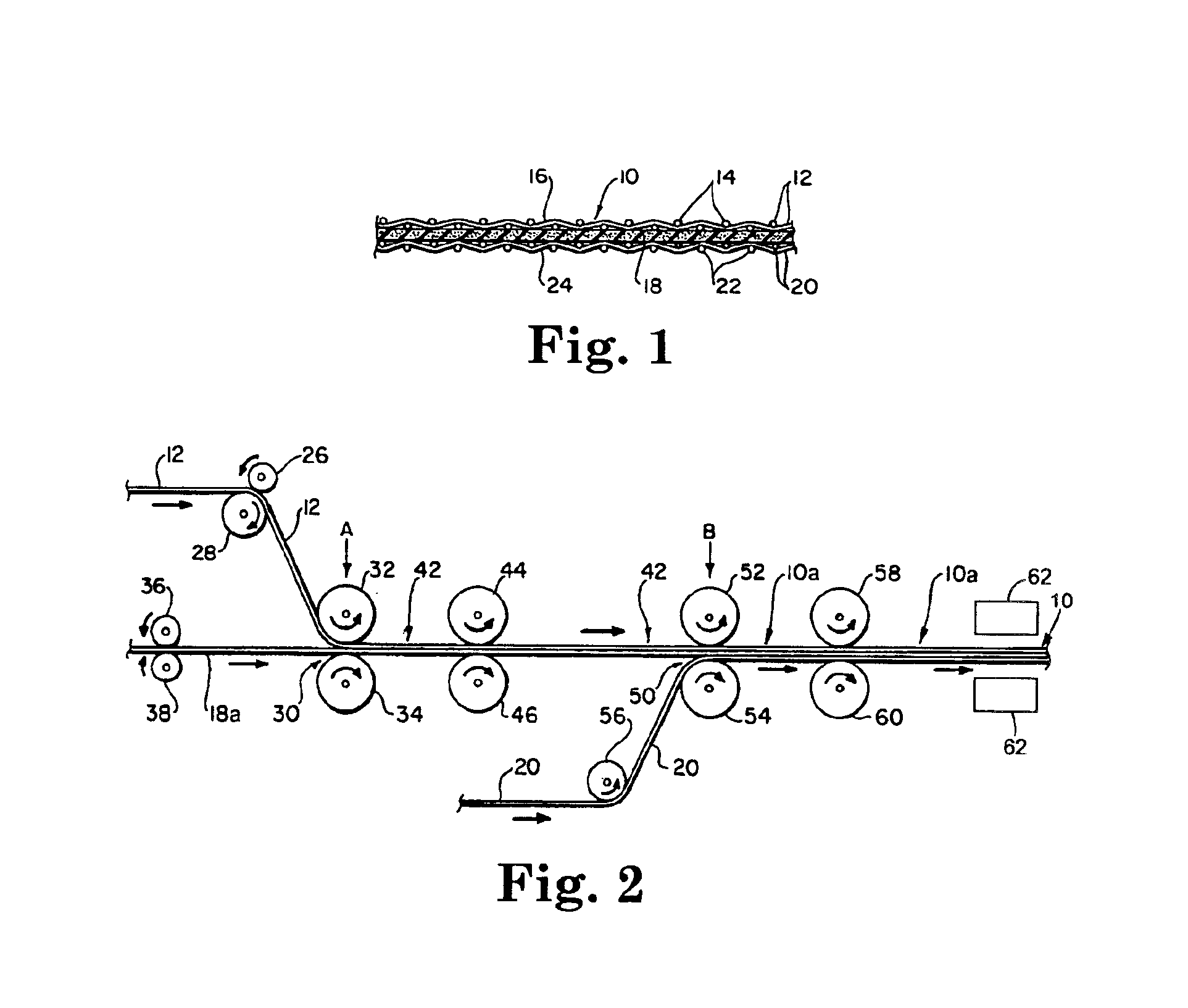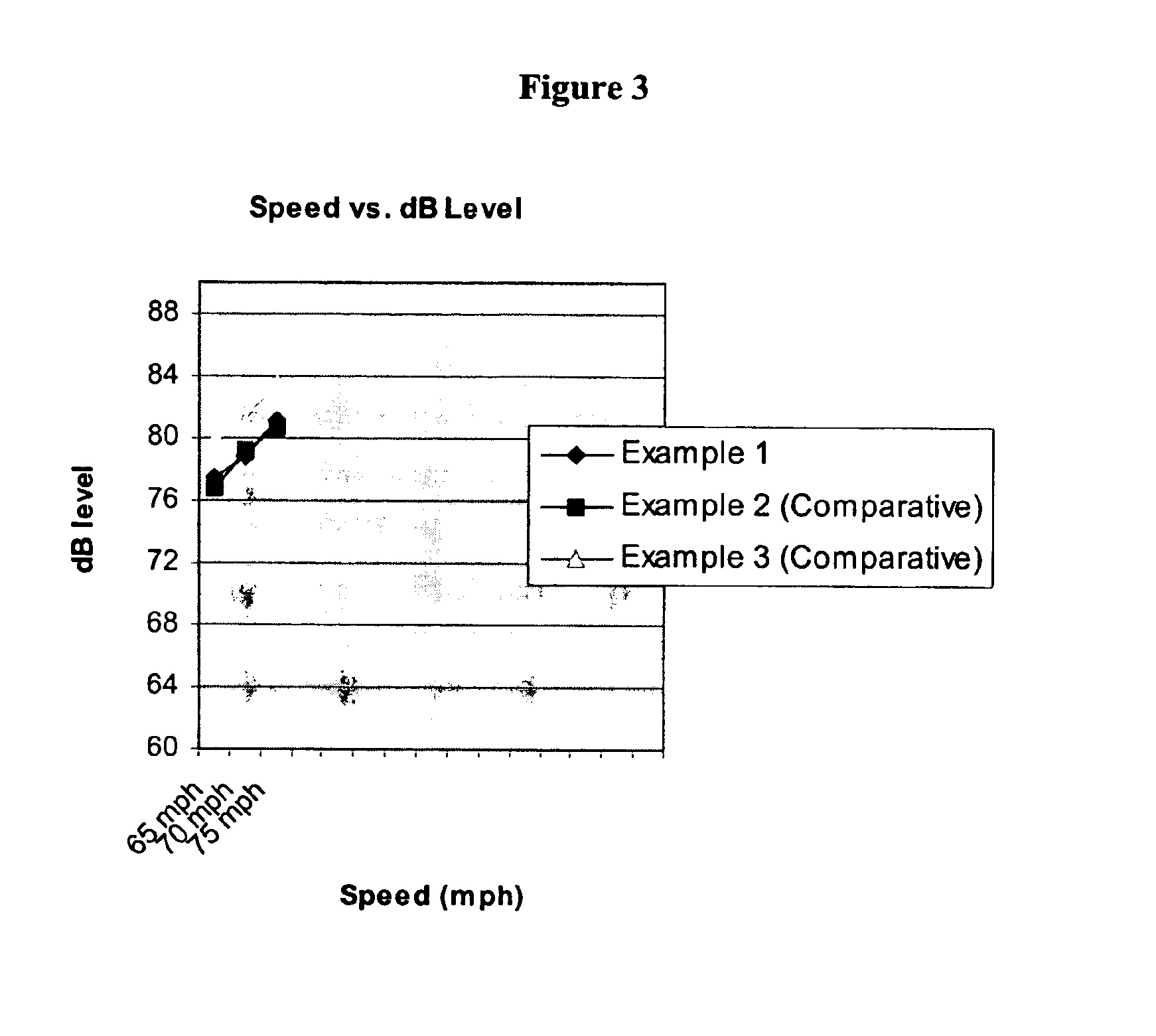Soft cover for vehicles and process for making
- Summary
- Abstract
- Description
- Claims
- Application Information
AI Technical Summary
Benefits of technology
Problems solved by technology
Method used
Image
Examples
example 1
A three-ply material of the present invention was prepared, wherein the three plies from the bottom up are composed of the following: 100% polyester sateen woven textile, a foamed or expanded PVC layer having a density of 0.465 g / cc, and a PVC skin coat. The textile is about 8 mils thick, the foamed PVC is about 22-28 mils thick, and the skin coat is about 10-11 mils thick. The total gauge of the finished product is about 50-52 mils. The variation in the thickness of the material is due to embossing. The total weight of the material is about 24.9 osy.
PUM
| Property | Measurement | Unit |
|---|---|---|
| Length | aaaaa | aaaaa |
| Fraction | aaaaa | aaaaa |
| Linear density | aaaaa | aaaaa |
Abstract
Description
Claims
Application Information
 Login to View More
Login to View More - R&D
- Intellectual Property
- Life Sciences
- Materials
- Tech Scout
- Unparalleled Data Quality
- Higher Quality Content
- 60% Fewer Hallucinations
Browse by: Latest US Patents, China's latest patents, Technical Efficacy Thesaurus, Application Domain, Technology Topic, Popular Technical Reports.
© 2025 PatSnap. All rights reserved.Legal|Privacy policy|Modern Slavery Act Transparency Statement|Sitemap|About US| Contact US: help@patsnap.com



